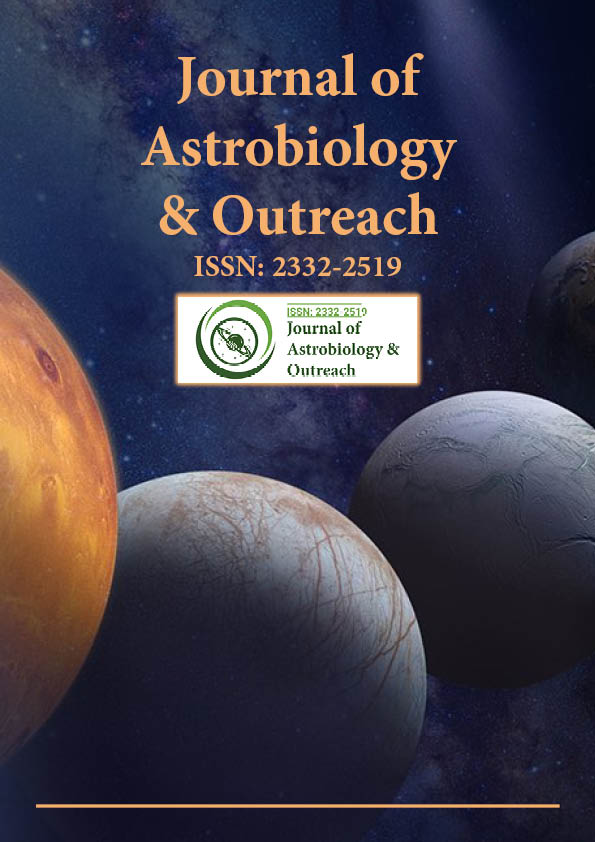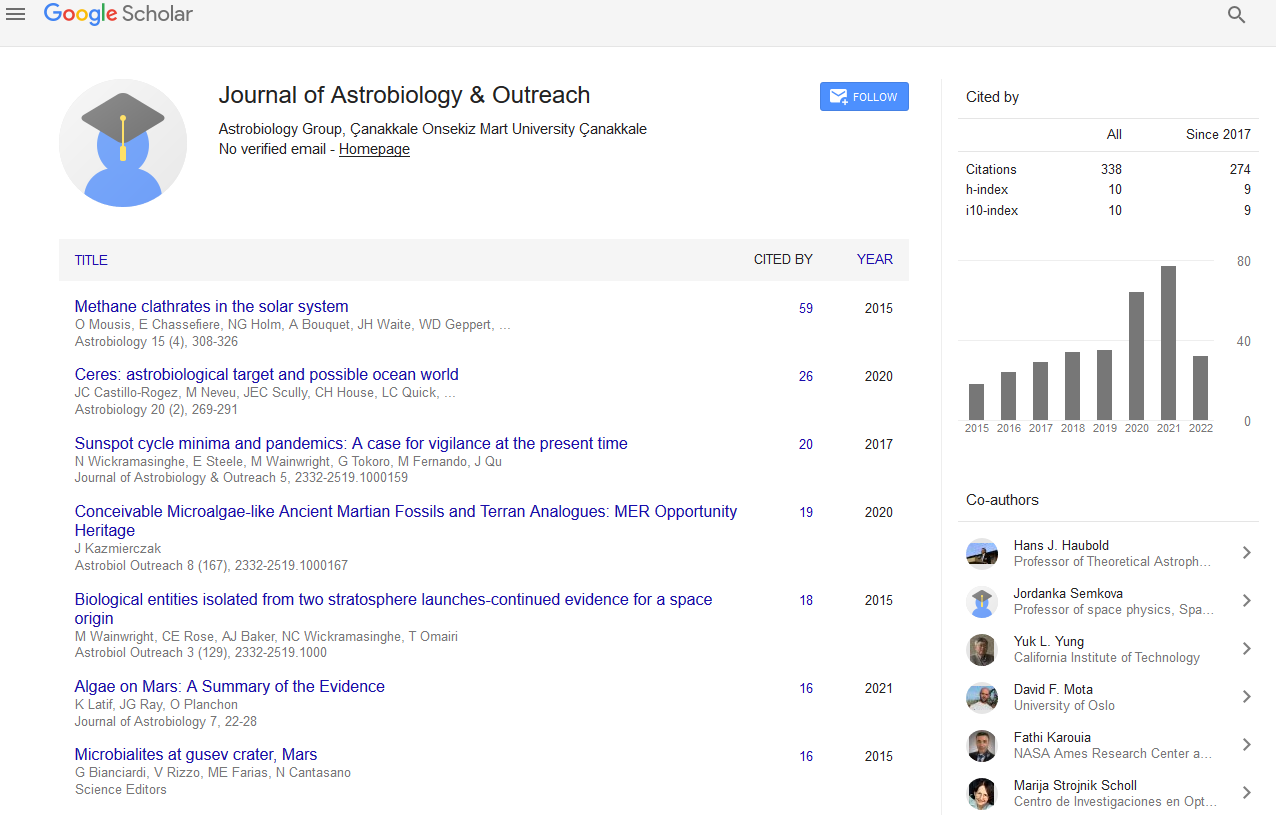Indexed In
- Open J Gate
- Academic Keys
- JournalTOCs
- RefSeek
- Hamdard University
- EBSCO A-Z
- OCLC- WorldCat
- Google Scholar
Useful Links
Share This Page
Journal Flyer

Open Access Journals
- Agri and Aquaculture
- Biochemistry
- Bioinformatics & Systems Biology
- Business & Management
- Chemistry
- Clinical Sciences
- Engineering
- Food & Nutrition
- General Science
- Genetics & Molecular Biology
- Immunology & Microbiology
- Medical Sciences
- Neuroscience & Psychology
- Nursing & Health Care
- Pharmaceutical Sciences
Commentary - (2025) Volume 13, Issue 1
Optimized Asteroid Deflection through Whale Optimization Algorithm
Ethan Marsden*Received: 19-Feb-2025, Manuscript No. JAO-25-28770; Editor assigned: 21-Feb-2025, Pre QC No. JAO-25-28770 (PQ); Reviewed: 07-Mar-2025, QC No. JAO-25-28770; Revised: 14-Mar-2025, Manuscript No. JAO-25-28770 (R); Published: 21-Mar-2025, DOI: 10.35248/2332-2519.25.13.371
Description
The ever-present risk of asteroid impacts continues to drive innovation in planetary defense strategies, particularly in optimizing asteroid deflection techniques. Among the emerging strategies, kinetic impactors stand out as a direct and relatively mature method for altering an asteroid's trajectory. The case of asteroid Didymos and its moonlet Dimorphos has become a focal point in demonstrating the feasibility of kinetic deflection, especially with the recent DART mission. However, to maximize the impact's efficiency, both in terms of energy transfer and trajectory deflection, the precision in mission design becomes critical. This is where intelligent optimization algorithms such as the Whale Optimization Algorithm (WOA) reveal their potential.
The Whale Optimization Algorithm, inspired by the bubble-net hunting technique of humpback whales, has gained traction in solving complex, nonlinear optimization problems due to its simplicity, strong convergence properties and balance between exploration and exploitation. Applied to the problem of asteroid deflection, WOA can optimize several mission parameters, including impact velocity, timing, and angle of approach and spacecraft mass distribution. By doing so, it seeks to maximize the velocity change imparted to an asteroid such as Didymos, effectively enhancing mission effectiveness with minimal additional resource demands.
WOA's strength lies in its ability to simulate the intelligent movement of whale agents around a search space, which in this context represents the multidimensional parameter space of a deflection mission. The algorithm allows these virtual agents to iteratively converge on optimal solutions that represent the best combination of mission characteristics for maximum momentum transfer. Unlike traditional methods that may depend on exhaustive search or gradient-based approaches, WOA circumvents the need for derivative information and accommodates nonlinear constraints and uncertainties — an invaluable trait when dealing with space mission design involving celestial bodies.
The dynamics of an asteroid impact scenario involve multiple layers of complexity. Asteroids are not homogeneous spheres; their mass distribution, spin states, surface compositions and regolith behavior can all influence how momentum is transferred upon impact. Moreover, the gravitational relationship between Didymos and its moonlet further complicates the modeling of post-impact trajectories. A brute-force approach to navigating these variables is computationally intensive and often fails to yield globally optimal solutions. This is where WOA distinguishes itself, effectively navigating such complexity by mimicking the strategic prey encircling behavior observed in nature.
In practical application, the algorithm has shown promising results in simulations where parameters such as impactor mass, velocity vector orientation and timing relative to the asteroid's orbital phase were fine-tuned. These simulations demonstrated that minor changes in impactor approach angles or mass concentration could yield significantly greater velocity deflection values. In the context of Didymos, this is particularly valuable, as increasing the efficiency of deflection reduces the need for heavy spacecraft or high-energy propulsion, both of which are critical limitations in mission planning and cost.
Critically, the use of WOA does not replace physical validation but enhances the pre-mission planning phase by providing optimized starting points for further analysis and simulation. It should also be noted that WOA, like all metaheuristic algorithms, carries some dependence on initial conditions and parameter tuning. Therefore, hybrid models combining WOA with other algorithms such as genetic algorithms or particle swarm optimization may further strengthen its robustness and applicability to real-world missions.
In conclusion, the use of the Whale Optimization Algorithm in maximizing the velocity deflection of asteroid Didymos exemplifies a significant convergence between computational intelligence and planetary defense. By providing a highly effective tool for navigating the complex decision space of asteroid impact missions, WOA presents an efficient, adaptable and scalable solution. Continued research and simulation efforts will further refine its use and integrate it with physical mission constraints, opening the door to more responsive and precise asteroid deflection strategies in the future.
Citation: Marsden E (2025). Optimized Asteroid Deflection through Whale Optimization Algorithm. J Astrobiol Outreach. 13:371.
Copyright: © 2025 Marsden E. This is an open-access article distributed under the terms of the Creative Commons Attribution License, which permits unrestricted use, distribution, and reproduction in any medium, provided the original author and source are credited.

